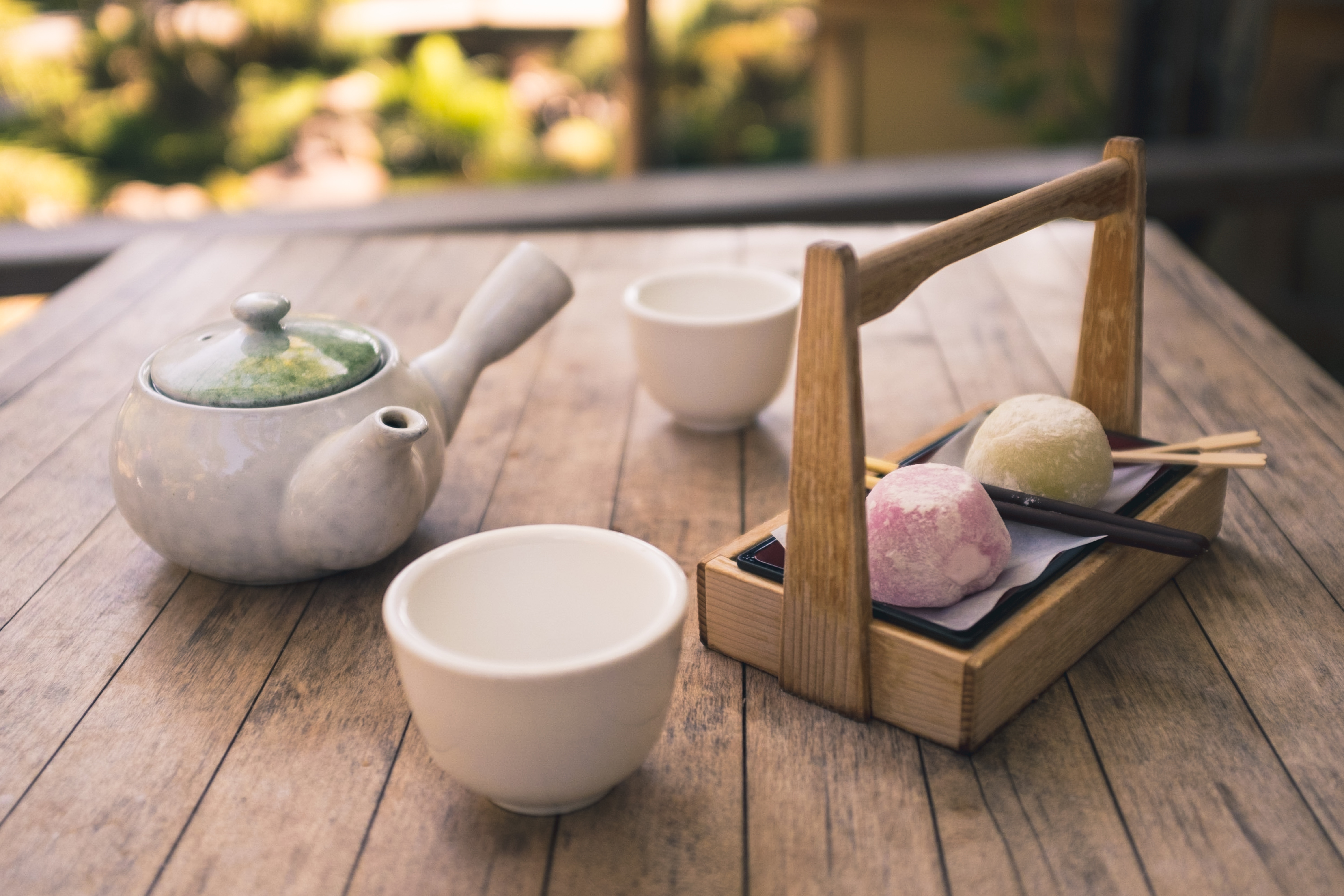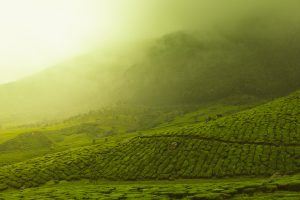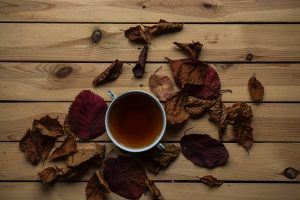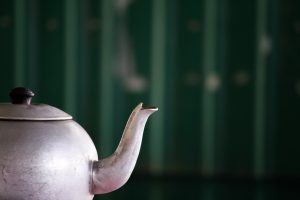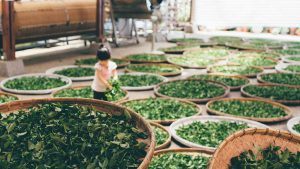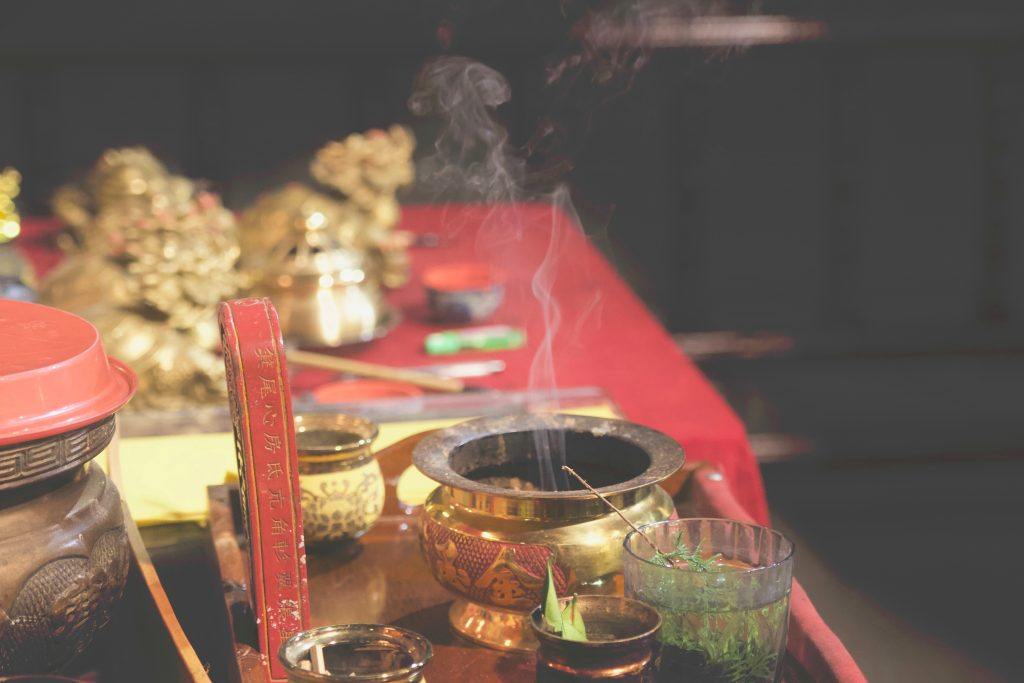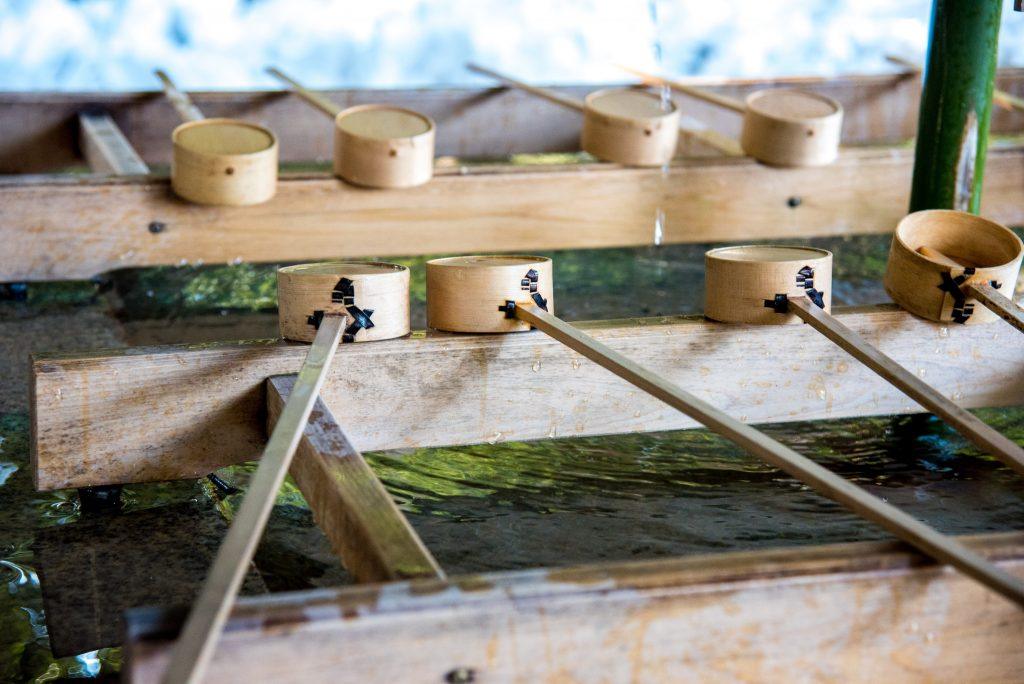You can always get tea-lovers talking by posing the question: What’s the difference between Japanese and Chinese teas? There are hundreds of related questions based on this one, like “Are Japanese teas better-tasting than Chinese teas?”, and “How do the two countries’ green teas stack up against each other for taste, health benefits and price?”
People unfamiliar with Asian tea varieties might want a quick question-and-answer primer on the topic before we take a shot at answering the key question about the differences between Chinese and Japanese teas. In fact, we’ll use the Q-and-A format throughout, so readers can begin and end at whatever point they choose.
Are all Japanese teas green?
The short answer is “yes.” There are a few non-green teas grown on Japanese soil but something like 99.98 percent of all Japanese tea is green.
Are all Chinese teas brown and black?
No. Chinese teas span the range of color, taste, quality, and price. There are yellow, white, black, brown, green and practically all hues of Chinese tea.
Are Chinese teas more expensive than Japanese varieties?
Overall, Japanese teas tend to cost a bit more than Chinese teas, but not because of quality. Because so many different Chinese companies are competing in the global marketplace for market share, they have to keep their prices low. There aren’t as many Japanese tea companies, and with Japanese products being slightly harder to find in Western stores, the prices are somewhat higher.
Which country exports the most tea?
No one compares to China in the tea export game. The export king, China exports more than 20 percent of the world’s tea, while Sri Lanka and Kenya are close competitors, with about 19 percent each. The dollar value of China’s tea exports weighs in at a whopping US$ 1.6 billion. Japan just doesn’t have the land area to compete in that realm, exporting about 2 percent of the world’s tea products, valued at about US$ 129 million, or less than one-tenth of China’s export level.
What are the two best Chinese teas?
“Best” is a relative term, but there are certainly levels of quality and universally accepted flavor that can be taken into account.
There’s pretty wide agreement that two of the top Chinese teas are Sichuan Dew and organic versions of Bohea Lapsang.
The first comes from Sichuan’s plains, which are famously high in humidity. It’s steamed and always hand-picked. The Chinese are credited with originating the concept of steaming tea leaves, even though the Japanese later perfected the process. Steaming adds to the grassy taste, sweetness, and freshness of any tea.
Organic Bohea Lapsang originates in Fujian’s mountainous regions. The leaves are painstakingly dried very slowly. Tea farmers use fires stoked with pine wood that has been stripped of its bark. The result is what has been called the ideal after-dinner tea, rich with a unique smoky flavor, yet soft and very smooth on the throat.
What are the two best Japanese teas?
Again, this is a huge judgment call, but millions of tea drinkers who know their Japanese blends would quickly say that matcha and sencha are the clear winners within the diverse world of Japanese tea.
Matcha is deeply flavored with a sweetness that is unrivaled. Using sencha leaves that are processed in a slow, deliberate manner, matcha cultivators often hand-grind the leaves. After two hours’ work at the grinder, the result is about 80 grams of matcha tea, which partly explains this tea’s high price and its value as an export.
Most sencha tea is picked during the month of May. The leaves are rolled after a thorough steaming process. The freshness is enhanced by a grassy taste and wonderful fragrance. When served, the water is usually kept at a temperature lower than 70 degrees centigrade. Sencha is one of the best-selling teas in the world.
Are Chinese teas good for a person’s health?
The following should not be taken as medical advice but is for informational purposes only. However, Chinese tea is thought to be one of the world’s oldest medicines and is still used by Asian wellness practitioners to treat various conditions and as a preventative for many other health problems.
In ancient and modern times, Chinese black tea is used to reduce body fat, cut down on fatigue, and for bone health. Chinese green teas are thought to help fight viruses, regulate cholesterol, and boost blood flow. White tea can possibly regulate insulin levels, fight arthritis, and reduce inflammation. Oolong tea is used for skin health, to avoid tooth decay, and regulate body temperature. Finally, Pu-erh tea might be able to fight colds, help digestion, and act as a deterrent for hepatitis.
What are the health benefits of Japanese tea?
The advantages of Japanese tea can’t really compare to those of Chinese teas for the simple fact that there are so many different kinds of Chinese tea plants. Most Japanese tea, as noted above, is green. But even with that limitation, the health advantages of Japanese green tea are numerous, and include factors like the removal of dangerous “free radicals” from the bloodstream, antibacterial properties, reducing fat and cholesterol levels, acting as an anti-allergen and anti-viral, preventing cavities, and acting as a general antiseptic in the human body.
The Verdict
There you have it, a Q-and-A comparison of Japanese and Chinese teas. Taken together, the information reveals much about the comparative tea qualities of each nation. China, of course, is the historic source of tea, while the Japanese have done some things with the plant that others never thought of. As for quality and taste, those both come down to personal preference, so there are no correct “answers” for those questions.
Whether your favorite is Chinese tea or Japanese tea, the choices are endless and the study of comparing the two is a worthwhile, interesting, and delicious endeavor.
